- Joined
- Nov 1, 2018
- Messages
- 3,849
- Reaction score
- 2,886
Which 3rd model? There were 2 patterns.
I wouldn’t do a third model , not huge demand in USA

Which 3rd model? There were 2 patterns.
A Bess has unique architecture. A Bess in anything other than walnut (and *maybe* beech) will look like a Bess in the wrong wood. Colonial guns may have resembled them, but were not copies by any stretch.I agree, if Jim Kibler offer’s a brown Bess in Cherry, well then you can call it a colonial restocked brown Bess, or call it a colonial gun if you must. My point was the choice different wood is a neat option.
A situation that is almost as silly as the love of the Bess in general while completely ignoring the French muskets. Or the odd love affair with the Baker rifle.I wouldn’t do a third model , not huge demand in USA
Virginia certainly had some that came very close.A Bess has unique architecture. A Bess in anything other than walnut (and *maybe* beech) will look like a Bess in the wrong wood. Colonial guns may have resembled them, but were not copies by any stretch.
Of course, one could always modify a Bess stock to make it more generic.
Virginia certainly had some that came very close.
And English Gentlemans Flintlock Sporting Rifle.Trade Guns too, tulle and northwest.
Regarding Mr. Kibler's post I believe there would be a viable market for a historically accurate Brown Bess kit.
Another option could be an "Officers Model" fusil similar to the last one brought to market by Curly Gostomski.
Here in French dominated Missouri and Illinois it is hard to find British reenactors.
I agree with you 100%. The other guy is some type of "know it all" jerk. Like you, I also have studied history. During the French & Indian War the British government did supply the colonist with Brown Bess muskets. Some of Rogers' Rangers used a cut down Brown Bess, creating a carbine. I personally have a replica of one of those. The Continental Congress borrowed money from France to buy and equip our forces with Charleville muskets too.Obviously my “tongue in cheek” comment went completely over your irrational, judge-mental head. The founding fathers were willing to face death to rebel against their perceived “oppression”. One man’s patriot is another’s enemy. Living at the time when all these things unfolded gives that person a certain perspective on the choice to become a loyalist or a rebel.
Enforcing the peace or guilty of the Boston massacre depends on an individual's viewpoint.
Many thanks for instructing me about all those French muskets that apparently were not supplied to the Continental Army.
Incidentally, Mr. Knowledge, I have not read a comic book since I was seven. My interest in history started shortly after and expanded from the Civil War back into medieval Europe.
The post was meant to try to understand why so many are interested in the King’s musket when they were considered government property and not actually available to the private citizen. Thanks to @dave_person for his informative response. As for you, go find your own mydol bottle.
At the end of the F&I war, the Crown had sent approximately 30,000 Kings pattern muskets with wood rammers (1730, 1730/40, 1742 patterns) and 4,500 Dutch muskets. 2,000 P1757 Marine & Militia muskets were also sent, there were also full commercial copies of the Kings musket that were imported. How many survived to be placed into armories of the various colonies and the royal storehouse in NY I have never been able to find out. There were in all probability some private citizens that kept their muskets, but that is something that would be hard to pin down.Now I learned something today! Any idea of approximate numbers of the Long Land Pattern in the colonies at the outset of the war? Were these mostly housed in militia armories? Did private citizens have these as well?
Thanks for the information.
Snoot
Dave, how universal are contracted infantry muskets such as a Wilson contract musket? I don’t know much about the other regimental contracted muskets. Universal meaning covering all time periods from the French and Indian and Rev War.
Hi,A Bess has unique architecture. A Bess in anything other than walnut (and *maybe* beech) will look like a Bess in the wrong wood. Colonial guns may have resembled them, but were not copies by any stretch.
Of course, one could always modify a Bess stock to make it more generic.
Hi Nick,Dave, how universal are contracted infantry muskets such as a Wilson contract musket? I don’t know much about the other regimental contracted muskets. Universal meaning covering all time periods from the French and Indian and Rev War.
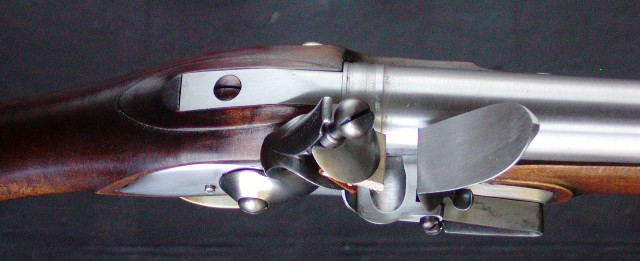
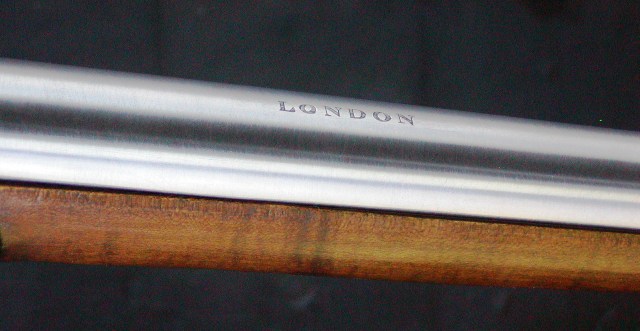
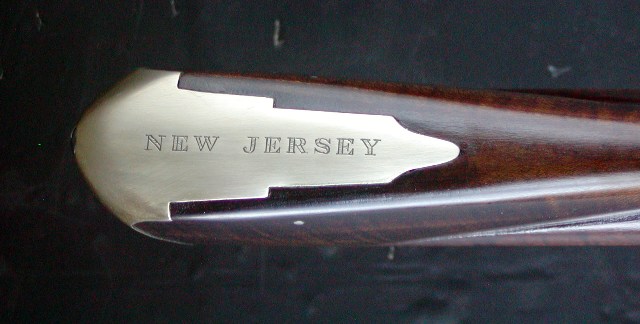
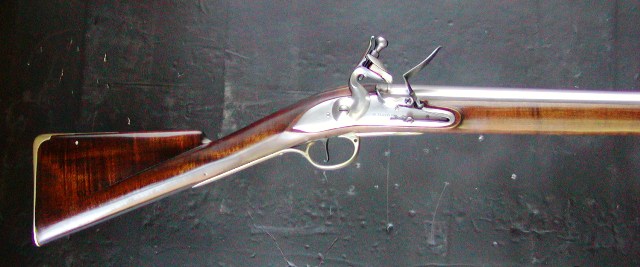
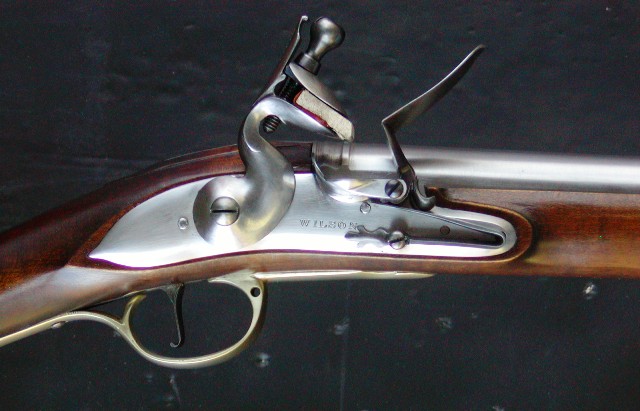
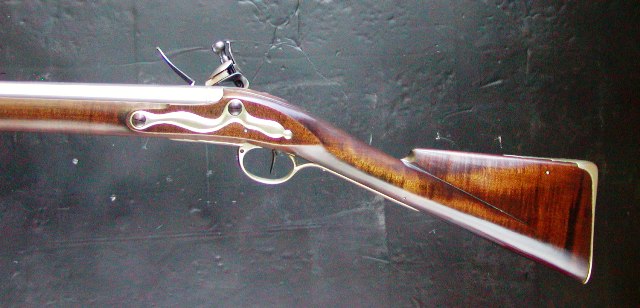
To the uneducated myself included, that IS a Brown bess. Only lacking the Tower engraving.Hi Nick,
Sorry, I did not respond to your question earlier. I am not sure how common the commercial muskets would have been in the early Rev War. Certainly many were purchased during from about 1747 to the early 1760s by Virginia, South Carolina, New Jersey, New York, and Connecticut but by the AWI, those guns would be pretty old. If held privately, they might have been cared for and still in good condition in 1775 but I suspect any stored in colonial arsenals were probably in bad shape. In the 18th century, in which environmental controls within buildings was primitive at best, stored muskets were perishable commodities. You can imagine what kind of staff you would need to clean and maintain 500 muskets and prevent them from rusting away. Anyway, I know there are a number of surviving colonially made muskets using parts from old commercial muskets and I am sure some survived and were used. Don Troiani painted a circa 1776 3rd NJ regiment soldier carrying one. I don't know how common they were, however. Most New Jersey guns purchased during the 1750s are at the bottom of Lake George off Sabbath Day Point. I made an early Rev War NJ militia musket that used old commercial muskets parts.






dave
Try it! You'll like it!Howdy folks. I have been wanting to purchase a Pedersoli Brown Bess, I’ve been looking at 1777 charlies also but I think the B.B desire is stronger.
Now this would be my first smoothie, and for those who have one I have some questions.
#1. How do you like it? Fun to shoot? Too heavy? Gripes?
#2. What’s your loadout? I will only be shooting round balls not cartridges. So what size are you using for RB, and patch. Or wadding?
#3. How much more “expensive” is it to shoot than smaller calibers? .735 round balls ain’t cheap in comparison, and a mold is about $150!
#4 Last question. What do I need to maintain it? Anything special? Or just a good ole fashion jag and cleaning patches?
Thank you for your input.
Back around 1976 when I was thinking of getting into Rev War enacting, I saw an offering for a super-authentic Bess replica, (don't recall whose), but I seem to recall they weighed about 15 pounds!! I was happy with my Japan-made lighter copy with the super-reliable lock! BTW, I do wish the Pedersoli locks had a more "sharper" clean stamped lock markings; they seem a bit wan but you can't have everything in a 'mass production' item.I believe if Mr. Kibler offered a Brown Bess it would be well accepted, especially with the 250th anniversary coming up. July last year I purchased from Dixie a Pedersoli M1777 French Musket to experiment on loads and use in smoothbore matches. I went with the Charleville over the Brown Bess because I have noticed that whenever I would see someone using a military model in a smoothbore match it was a Bess and not a Charleville, so I wanted something a little different. Many, many years ago when I bought a replica Civil War musket for the musket matches I chose a Richmond over the Enfield and Springfield for the same reason. The Bess I long wanted was the Dublin Castle marked replica. I think it had the dates of 1724 or 1728 and I believe was an Indian gun. My reason was because to me older is better, just my personal taste to go for the older style. Concerning all the posts on this forum about Baker Rifles, nothing wrong with that or with them, but to me the ultimate British replica to own would be the Ferguson, again my personal tastes, just like I admire and prefer the '64 Impala over all other cars ever made. Don't get me wrong, a replica Bess is a wonderful choice. Before leaving the subject, back in the late 90's to early 2000's Narrangansett offered a copy of a Long Land Pattern Bess they copied from an original found in a private collection. I believe the lock was marked Willets and dated 1746. I'm sure they probably had orders for some of those but I don't know how many and if they ever come up for sale.
Back around 1976 when I was thinking of getting into Rev War enacting, I saw an offering for a super-authentic Bess replica, (don't recall whose), but I seem to recall they weighed about 15 pounds!! I was happy with my Japan-made lighter copy with the super-reliable lock! BTW, I do wish the Pedersoli locks had a more "sharper" clean stamped lock markings; they seem a bit wan but you can't have everything in a 'mass production' item.
Hi,The Fergusons failed because the powder fowling gummed up the screw works after a couple shots.
You certainly know about these: I guess being NOT soldier-friendly is the real killer! Thanks for the good info.Hi,
It was not powder fouling that doomed the Fergusons. It was the weakness in the stock behind the lock. All Fergusons that show hard use such as the 2 ordnance rifles still surviving and several made for the East India Company, are broken across the stock just in front of the screw plug. I've built 3 Fergusons and frequently shoot the one I own. Patrick Ferguson hints at a lube for the screw plug in some of his correspondence. I use a mix of beeswax and Crisco and am able to fire 30-40 rounds without cleaning the screw plug. A real weakness almost never mentioned is that the chamber opens for loading with one full turn of the trigger guard handle. A second full turn and the plug drops out of the gun and it is easy when loading the rifle to allow the handle to swing a second turn. That could be fatal in battle and to return the plug, you have to orient it correctly so closes with the handle pointed back. It is NOT a soldier friendly gun to shoot. Although there is a lot of hyperbole claimed for speed of loading the gun, Ferguson wrote that the real advantage was his riflemen could easily load lying down behind cover.
dave
Enter your email address to join: